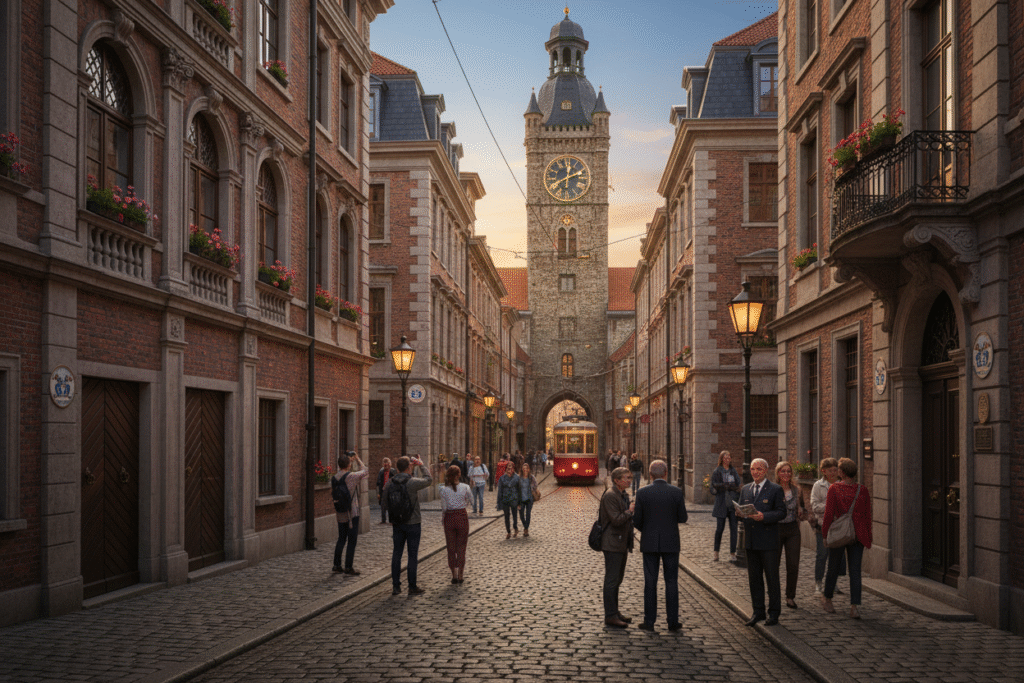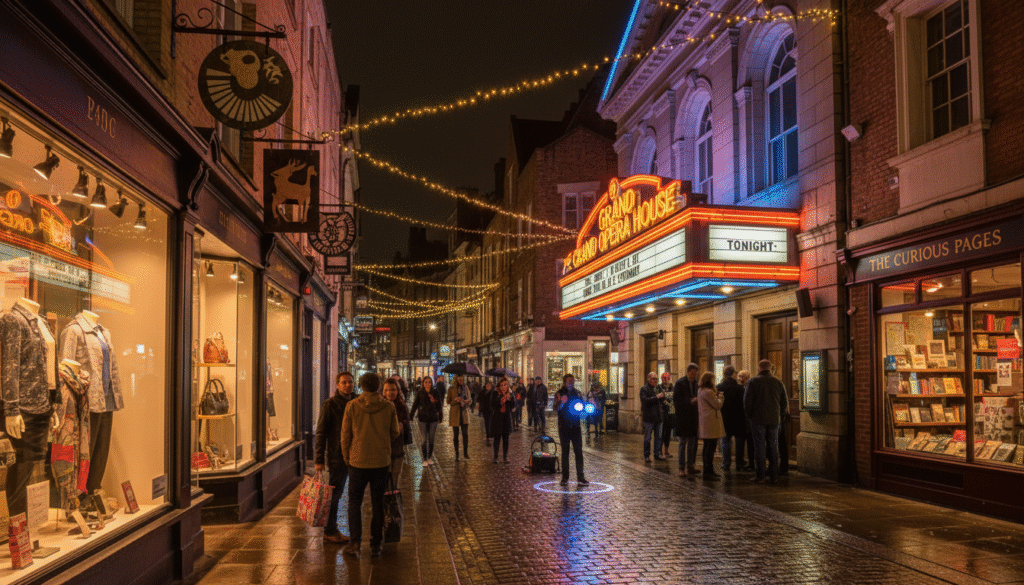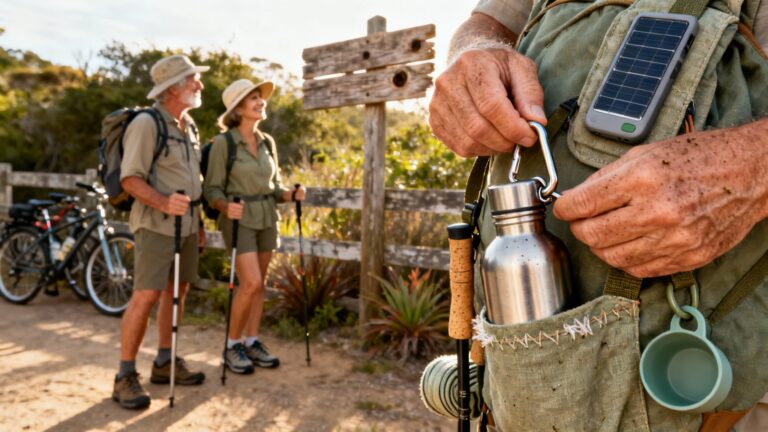Things to Do in a City: Your Ultimate Guide to Exploring Urban Adventures
Looking for fun things to do in a city that don’t just kill time, but actually make your trip feel worth the money, the planning, and the airport security lines? Whether you’re traveling solo, wrangling kids, or just escaping your regular routine for a weekend, cities are packed with more possibilities than you can fit into one visit. From famous landmarks to tiny neighborhood spots no algorithm has discovered yet, this guide will walk you through how to explore a city so it feels memorable, not mechanical.
I’ve always believed the best city trips are a mix of big “wow” moments and small, quiet ones—seeing the sights, sure, but also finding the café you’d happily make your local if you lived there.
Why Cities Are Perfect Destinations for Fun and Exploration
Cities are like living museums that decided to add better food, louder music, and public transit that sometimes (just sometimes) works exactly the way you hope. When you start looking for things to do in a city, you’re not choosing from a short list—you’re stepping into a place where history, culture, and everyday life all overlap on the same block.
A lot of cities lean into a particular personality:
- Some are art-obsessed, full of galleries and murals.
- Some are pure food heaven, where every street smells like a different kind of comfort.
- Others build their identity around music, design, or the outdoors.
What I love most is the variety packed into such a small radius. In one day, you can:
- Wander through a major museum.
- Walk streets that existed before your great‑grandparents were born.
- Bike along a river trail.
- End the night at a concert, trivia night, or tiny bar with a singer who sounds like they belong on a much bigger stage.
The U.S. Travel Association has pointed out that urban destinations tend to concentrate far more attractions and activities per square mile than rural areas. In plain English: cities give you a ton of experience for the time you’re there.
And despite their reputation, a lot of the best things to do in a city are free or very low‑cost: park days, street festivals, free museum hours, live buskers, neighborhood wandering. You don’t need a luxury budget to have a rich trip.
Top Attractions: Museums, Parks, and Historic Sites
Let’s start with the classics—because like it or not, some of the most essential things to do in a city are the ones printed on every postcard.
Museums: More Than Just Rainy-Day Plans
Museums are the city’s brain. They hold the art, the artifacts, the weird and wonderful stories people decided were worth saving.
Whether you’re standing in front of an abstract piece at the Museum of Modern Art in New York, drifting past portraits at the Museum of Fine Arts in Boston, or bouncing between the Smithsonian museums in DC, you’re getting a crash course in what people here value.
One small hack I’ve learned: always check for free or “pay what you wish” hours. I still remember walking into a big city museum with less than a dollar in coins, fully expecting to be turned away, and instead being waved in with a smile. That exhibit is seared into my memory—not just because it was good, but because I felt like I snuck in on a technicality.
Don’t sleep on the quirky, hyper‑specific museums either. I once wandered into a museum dedicated entirely to vintage typewriters. I was expecting to be bored in five minutes. Instead, I found myself weirdly moved by the care people had put into preserving these old machines. It’s never the museum you plan for that sticks with you; it’s the one you stumble across.
Parks: The City’s Lungs
If museums are the brain, parks are the lungs.
When you’re planning things to do in a city, make space for green. Big-name parks like Central Park in New York or Golden Gate Park in San Francisco are famous for a reason, but even small neighborhood parks matter.
Those are the places where:
- Kids run wild on Playgrounds.
- Dogs sprint after the same tennis ball like it’s their job.
- Someone reads a paperback on a bench like they’ve been doing it every Saturday for years.
In warmer months, parks often double as outdoor venues: movie nights, yoga classes, free concerts, food trucks lined up along the paths. I’ve spent entire evenings on a blanket watching an old movie projected onto a screen between two trees, surrounded by strangers who all gasped and laughed in unison. It’s simple, but it feels like you’re part of the city for a night—not just visiting it.
If the city’s near water, there’s usually some kind of beach, lakefront, or urban shoreline where people go to sunbathe, swim, and pretend they’re on vacation without technically leaving town.
Historic Districts and Landmarks
Historic districts and landmarks are where a city’s backstory shows up in 3D.
Walking through cobblestone streets, old brick buildings, or rows of preserved houses does something to your imagination. Places like the Chrysler Building or the Brooklyn Bridge don’t just look good in photos—they’re stitched into the identity of the city.
Smaller sites—like Alexander Hamilton’s house in Manhattan—can be surprisingly powerful. You stand there and realize: someone argued here, wrote letters here, skipped breakfast here. Real people, not just names from a textbook. If you’re into history (or even just musicals about history), these stops hit differently.

Dive into Local Life: Hidden Gems and Neighborhoods
Here’s where the magic really starts.
If you only ever chase the top attractions list, you’ll miss the best things to do in a city: the stuff people who live there do without thinking about it.
Some of my favorite discoveries have come from:
- Turning down a side street because a mural caught my eye.
- Following the smell of fresh bread until I found the bakery.
- Walking into a market just because it was loud and crowded in the best possible way.
One of my go‑to moves in any city is to ask someone local a very simple question: “If you had a free afternoon, where would you go?” Not the fancy answer. The honest one.
Once, a barista scribbled the name of her favorite jazz club on my receipt. No website, barely a sign—just a plain door on a quiet street. That night I sat in a dim room listening to a band that sounded like they’d been playing together for 20 years. It wasn’t on any “best things to do in a city” list. But it’s the part of that trip I remember most clearly.
Look for:
- Handwritten chalkboard signs outside cafés.
- Flyers taped to lampposts.
- Where locals seem to be heading around 6–7 p.m.
Those tiny clues often lead to the real heart of the city.
Outdoor and Active Adventures: Hiking, Biking, and More
City trips don’t have to be an endless loop of sitting, standing in lines, and then sitting again. If you like to move, there are plenty of active things to do in a city that don’t involve a treadmill in the hotel gym.
Many cities are wrapped in or built around nature—sometimes without even bragging about it:
- Hills and viewpoints that give you skyline panoramas.
- Forested trails just outside downtown.
- Rivers with paved walking and cycling paths running beside them.
Places like Salt Lake City make it almost comically easy to trade skyscrapers for mountain views. Seattle and Portland are so bike‑friendly it sometimes feels like half the city is on two wheels. I’ve rented bikes in a few cities just to follow where the locals go, and it’s still one of my favorite ways to understand the layout of a place.
In winter, mountain‑adjacent cities might put skiing or snowboarding on your list. In summer, lakes and rivers open up options like kayaking, canoeing, and paddleboarding. And yes, stand‑up paddleboard yoga is a real thing. Yes, people fall in. No, I still haven’t tried it.
One very un‑glamorous tip: if something is popular and weather‑dependent, book ahead. I’ve walked up to kayak rental booths on sunny Saturdays more than once, only to hear, “We’re fully booked for today.” Learned that lesson the hard way. Twice.
Waterfront and Beach Activities: Embracing the City’s Blue Spaces
There’s something about a city’s waterfront that feels like the whole place is taking a deep breath.
When you’re picking things to do in a city, don’t ignore anything that involves water—rivers, harbors, lakes, canals, even man‑made urban beaches.
Waterfront areas often come with:
- Boardwalks lined with food stands and street performers.
- Long promenades perfect for walking, jogging, or just aimlessly wandering.
- Piers where people fish, snack, take photos, or just stare at the horizon.
- Benches that have clearly seen a lot of big talks and quiet moments.
On summer evenings, these spots feel almost like a festival, even when nothing “official” is happening. Families, teens, couples, runners, people walking dogs that clearly think they own the place—it’s one of the easiest places to see the city simply being itself.
You can go active—rent a kayak, join a sunset bike ride along the water, try paddleboarding—or you can sit on a bench with a cheap ice cream and let the whole scene roll by. Both options are valid. Both count.
Honestly, some of my favorite city moments are just me, a waterfront, and the feeling of “I cannot believe they get to live here.”
Shopping and Entertainment: From Boutiques to Big Shows
Even if you’re not “a shopper,” browsing is one of those sneaky things to do in a city that can tell you a lot about the place.
I’ve lost track of how many afternoons I’ve drifted through:
- Independent boutiques with clothes and decor that feel like someone’s Pinterest board came to life.
- Vintage shops where every item looks like it’s already lived a full, dramatic life.
- Bookstores that somehow make time move faster inside.
You don’t have to buy anything. Sometimes just seeing what’s in the windows gives you a sense of the city’s style and humor.
On the other end of the spectrum, big malls and shopping centers can be surprisingly useful. Are they the most “authentic”? No. Are they lifesavers on freezing or rainy days? Absolutely.

Entertainment That Sticks With You
Shopping is only half the story. If you want things to do in a city that turn into actual stories, pay attention to the entertainment scene.
You’ll usually find:
- Tiny venues with live bands playing original music.
- Larger halls with big‑name acts.
- Comedy clubs where you may laugh until you cry—or at least until you forget what day it is.
- Theaters showing everything from classics to experimental plays that leave you saying, “Wait, what just happened?” in a good way.
And then there’s trivia night.
I once lost a trivia game because I was painfully confident about the capital of a U.S. state. I was also painfully wrong. My team did not let me forget it, but we laughed about it all night. I don’t remember the name of the bar. I absolutely remember the moment someone yelled, “ARE YOU SURE?” and I said yes, with the confidence of a person who should not have been that confident.
Food and Drink Scene: Savoring Local Flavors
If I’m honest, food is usually at the top of my personal list of things to do in a city.
You learn so much from:
- What’s on the menu.
- What has a line out the door.
- Which dishes everyone says you “have to” try at least once.
Cities are where you can:
- Taste classic local dishes you’ve only ever seen on TV.
- Wander entire streets dedicated to a single cuisine.
- Build meals out of bite‑sized things from different food trucks.
- Find cafés where people treat coffee like a science and pastries like a religion.
One of my favorite rituals is simple: sit outside if you can, order something the server says is their favorite, and then just watch the city go by. Couples on dates, friends catching up, people power‑walking to somewhere important—it’s the easiest way to feel temporarily woven into the fabric of a place.
If you’re trying to watch your budget, the food scene can still be friendly:
- Food trucks often serve generous, creative meals for less than sit‑down restaurants.
- Lunch menus at nicer spots are usually cheaper than their dinner versions.
- Happy hour can turn you into a short‑term regular if you time it right.
- Local markets are perfect for grabbing bread, cheese, fruit, and turning it into a picnic.
If you love stories as much as snacks, look for cooking classes or food tours. A lot of cities now offer walking tastings that combine history, culture, and the occasional “I didn’t know I liked this, but apparently I do” moment.
Unique and Quirky Activities: Offbeat Urban Experiences
Some of the most memorable things to do in a city are the ones you don’t quite know how to explain to people later.
Maybe it’s:
- A museum dedicated to something extremely specific.
- A street art workshop in a back alley.
- A rooftop garden hidden on top of a very normal‑looking building.
- A board game café where time disappears and suddenly it’s midnight.
I’ve followed badly drawn posters down side streets and ended up in tiny theaters watching performers pour their hearts out to an audience of 20. I’ve walked into art shows where half of what I saw confused me and the other half made me think about it for days. I’ve stumbled into open‑mic nights that were half brilliant, half gloriously awkward, and 100% unforgettable.
Cities are full of these little side quests if you’re willing to say yes to things that don’t appear on official tourism websites.
Social and Cultural Events: Concerts, Festivals, and Trivia Nights
If you really want to feel a city’s pulse, go where people gather on purpose.
Social and cultural events deserve a spot high on any list of things to do in a city:
- Free concerts in parks.
- Street festivals with food stalls and pop‑up performances.
- Cultural celebrations that fill entire streets with color, music, and dancing.
You don’t have to be the most outgoing person to enjoy them. Sometimes it’s enough to grab something to eat, sit on a curb or in a park, and just let the whole thing wash over you.
And yes, I’m going to mention trivia nights again. They’re low‑stakes, weirdly bonding, and often come with decent food and drink specials. I’ve met more random, interesting people arguing about movie soundtracks and 90s TV at trivia nights than at most “networking” events.
You can also look out for:
- Theater performances and small plays.
- Live tapings of podcasts, radio, or TV shows if the city is a media hub.
- Gallery openings and open‑studio nights where you actually get to talk to artists.
The nice thing about these events is that they’re often affordable, if not free, and they show you what the city cares about beyond its landmarks.
Nightlife and Evening Activities: After-Dark Urban Adventures
When the sun goes down, a city doesn’t shut off—it just switches moods.
For night owls, there are endless things to do in a city after dark:
- Late‑night food runs: noodles, tacos, pizza slices, diner breakfasts at 1 a.m.
- Bars with live music, from mellow jazz to full‑volume rock.
- Dance clubs where you lose track of time and the exact location of your friends.
- Night markets and evening events that feel like someone turned up the saturation on the whole place.
I love neighborhoods that hang string lights over patios and side streets. You walk under them and it feels like the city is dressed up just a little bit for the evening.
If you’re not a loud‑crowd person, there’s still a whole menu of nighttime options:
- Rooftop bars with skyline views and soft background music.
- Cozy cafés that stay open late for dessert and conversation.
- Nighttime harbor or river cruises.
- Simple evening walks through historic districts that glow under streetlights.
The trick is to pick what actually sounds fun to you, not what you feel like you’re “supposed” to do.
Affordable and Free Activities: How to Explore Without Breaking the Bank
Here’s the good news: a lot of the best things to do in a city don’t demand a huge budget.
Some of the most rewarding options are:
- Ferry rides or local boats that double as public transit and cheap sightseeing.
- Free walking tours (where you tip what you can at the end).
- Parks, plazas, gardens, and riverfront promenades.
- Museums with free days or discounted evening hours.
- Street performers, open‑air concerts, and small public events.
Some travel platforms and loyalty programs let you earn credits you can redeem for attractions. It’s not exactly “free money,” but it can knock down the cost of a few tickets.
And then there’s public transport.
Riding a city’s subway, tram, or bus system gives you a front‑row seat to everyday life: students, commuters, families, people heading to late shifts, someone balancing an impossible stack of boxes. It’s cheap, often faster than sitting in traffic, and weirdly memorable. I’ve had entire days where my favorite memory wasn’t the big attraction, but a tiny, shared moment on a tram—like when a whole carriage started laughing because a kid told a story with way too much dramatic flair.

Planning Your Trip: Tips for Making the Most of Your City Visit
When you first start listing things to do in a city, it’s easy to feel like you need a spreadsheet and a second brain. You don’t. A few simple habits go a long way.
Do your research, but lightly:
Check for free or reduced‑price admission times. Look up festivals or events happening while you’re there so you don’t miss something that perfectly matches your interests.
Mix famous with everyday:
Yes, see the iconic spots. But also plan time to wander neighborhoods, sit in cafés, browse markets, or just follow whatever looks interesting.
Wear comfortable shoes:
City blocks are sneaky. “Just a few streets away” turns into 15,000 steps before you know it. Your feet will absolutely keep score.
Leave room for surprises:
Some of the best things to do in a city are the ones you don’t know about yet. Don’t schedule every hour. Give yourself a free afternoon and see what happens.
Use apps and local resources:
Meetup, Couchsurfing, local event calendars, and even basic map and transit apps can help you find events, avoid getting lost, and feel less like you’re guessing all the time.
Over time, I’ve started keeping tiny city lists for myself—streets I want to walk again, parks that feel like instant calm, bakeries I’d cross town for. The comment I hear most from other travelers? “I wish I’d left more unplanned time.”
Wrapping Up: Why Exploring a City Is Always Worth It
Cities are messy, noisy, beautiful, and endlessly interesting. That’s exactly why they’re such rewarding places to explore.
When you hunt for things to do in a city, you’re really trying to answer a deeper question: “How do I actually meet this place, not just pass through it?” The answer usually ends up being a mix of:
- Big landmarks you’ve seen in photos your whole life.
- Small corners you didn’t know existed until you turned the right way.
- Moments you couldn’t have planned if you tried.
Research published in the Journal of Travel Research has found that travelers who combine planned activities with spontaneous exploration report significantly higher satisfaction with their trips than those who schedule everything down to the minute. That lines up perfectly with what I’ve experienced: the best stories usually come from the in‑between moments.
So next time you’re wondering what to put on your list of things to do in a city, aim for a blend: the iconic, the everyday, the slightly weird, and the completely unplanned.
Walk a little farther than you meant to. Say yes to one thing that makes you slightly nervous (within reason). Sit on a bench and watch the city breathe for a while.
Then go home with more than just photos—you’ll bring back stories that feel like they belong only to you.
Happy city adventures.







